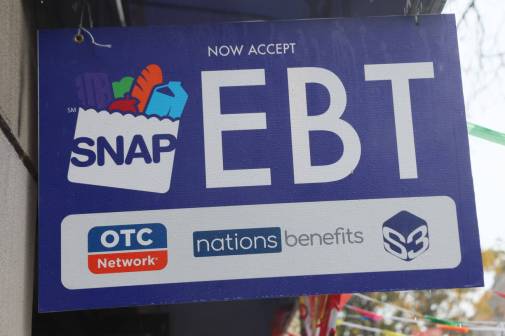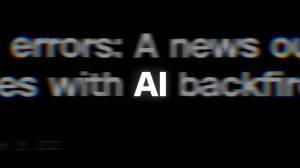Future of government benefits delivery is ‘human-centered,’ say researchers, officials

To improve the digital systems used by state governments to provide benefits to the public, agencies should prioritize “resident experience,” flexibility and data consolidation, public policy researchers and officials said at a recent event.
State systems that process applications and manage benefits for unemployment insurance, health care and food have taken center stage in states’ modernization efforts since the COVID-19 pandemic. The large volume of claims states received highlighted widespread issues with the often decades-old systems, such as slow processing times and high fraud risk.
While federal efforts have helped — like Department of Labor grants and the department’s 2023 Open UI Initiative — states are continuing to enhance their systems. At a conference in Washington, D.C., hosted Tuesday and Wednesday by Georgetown University’s Beeck Center for Social Impact and Innovation, researchers said state agencies have many ways to reduce the burden on those eligible for benefits, but that they’ll only be successful if they use human-centered design.
Donald Moynihan, a professor of public policy at the University of Michigan and co-director of the school’s Better Government Lab, said government agencies should remember their reason for modernization: the impact on residents who need services. He said understanding the “administrative burden” placed on residents seeking services is a new area of research in human-centered public policy that government leaders should consider.
“What does administrative burden mean? Essentially, it is defined as people’s experience of policy implementation as onerous,” Moynihan said, who went on to explain three “costs” people incur when interacting with government: learning, compliance and psychological.
Learning costs, he said, involve the work of thinking about complex decisions, such as which plan to enroll in.
“Compliance costs are what we think of classically as red tape. So filling out forms, providing documentation — maybe there’s some financial costs that you encounter in complying with the sort of rules and requirements of administrative actors,” he said.
Psychological cost, he said, includes the emotional responses some people have when interacting with the government, such as stress, frustration or fear.
“These ideas of administrative burdens have gained some currency in government, and if you’re sort of working on this topic, there’s never been a better time,” he said. “That [idea] is not new, but the way in which customer experience is being discussed today is different in that it prioritizes burdens, in that it thinks about who are the people who were not getting to the service, not just the people who actually make it through the process.”
Moynihan shared examples from his research of how human-centered design can reduce administrative hurdles, particularly with Medicaid enrollment. He said his research found that automatic benefit renewal processes can significantly increase Medicaid coverage, and that states wanting to improve public trust in government should focus on measuring and reducing administrative burdens.
‘More options’
Aaron Snow, a fellow at the Beeck Center, told StateScoop there are technical parts of system modernization that offer states opportunities for improvement, particularly with unemployment insurance systems.
Snow authored a report on how state efforts to modernize their systems under the Department of Labor’s Open UI Initiative, which launched last December to change how states build and buy the tech that supports their unemployment insurance programs. It features a framework that states can use for UI system development, and it also aims to create a marketplace where states can buy software.
Snow said the goal of the initiative is to make states’ UI systems more modular and flexible, but noted that states that maintain their own systems, rather than outsourcing their systems to third-party vendors, are having more success.
“States that own their own systems just have more options,” Snow said in an interview. “They can go to market for the various pieces of their systems. They can use pieces from statewide or department-wide infrastructure, and components that are shared across their departments or across their state governments in ways that closed, end-to-end systems cannot.”
He also said that as states learn more about the challenges residents face when using their systems and continue to make improvements, those with modular systems can adapt more quickly and at reduced cost.
“One of the important things about modular code and having knowledge of and control of that code is that you can go straight to where you want to make and need to make changes quickly,” he said, whereas with end-to-end vendor-managed systems, states might have to put in change orders. “They can be expensive, they can take long time if the system is closed and you don’t know what it is you’re really asking for.”
Consolidating data
Maryland is streamlining its benefits systems and lessening the burden on the public by consolidating how state agencies access data. The work is led by MD Think, a platform launched in 2017 that’s shared by Maryland’s health, human and social services departments.
Patrick McLoughlin, executive director of MD Think and the state’s former chief data officer, said during the conference Wednesday that by consolidating information collected about various benefit programs into one system, the state can reduce the need for people to prove their eligibility multiple times.
“We often require our customers to prove their poverty or to prove that they’re eligible for these services. And we already have the data. We have everything we need in order to do that, and in many cases, we just continue to ask them over and over and over again,” McLoughlin said. “We need to culturally change that and make the benefits that they are eligible for and should be receiving accessible to them as quickly as we can.”
He said MD Think is focused on breaking down data silos between agencies to reduce the number of times residents must share their personal information, a practice that he said follows the privacy principle of data minimization.
“It’s not perfect, but we’re continuing to work on ways to improve this,” McLoughlin said. “[We’re] really being more thoughtful in the type of information we collect and then how we share that data behind the scenes.”






